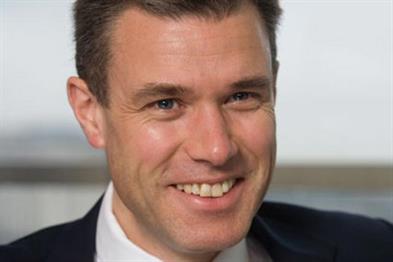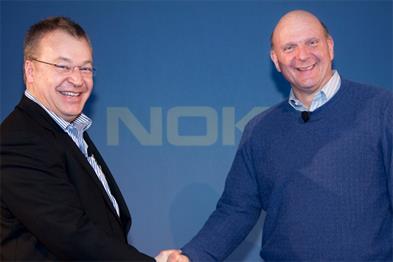# Introduction:
A
Market is a social arrangement that allows buyers and sellers to discover information and carry out a voluntary exchange of goods or services. The word "market" may refer to the location where goods are traded, sometimes known as a marketplace, or to a street market.
Markets generally rely on price adjustments to provide information to parties engaging in a transaction, so that each may accurately gauge the subsequent change of their
welfare. In less sophisticated markets, such as those involving barter. Markets are efficient when the price of a good or service attracts exactly as much demand as the market can currently supply. An economic system in which goods and services are exchanged by market functions is called a market economy.
# Types of markets:
- flea market (Traditional Market)
- auction market
- shopping center
- stock market
- free market (no govt. intervention)
- black markets (exchange of illegal goods & services)
# Marketing:Marketing, like life, is all about relationship. For today's marketing firms, there has been a shift from mere marketing to building, maintaining and enhancing long term relationships with customers, dealers, suppliers, government, advertising agencies, & others. Marketing, today, is shifting the focus from mere
Profit Maximization to
Relationship Marketing.
i. Philip Kotler -
"Marketing is human activity directed at satisfying needs & wants through exchange process"
ii. The Chartered Institute of Marketing (UK) -
"Marketing is the management process for identifying, anticipating & satisfying customer requirements profitably"
iii. American Marketing Association -"Marketing is the process of planning & executing the conception, pricing, promotion & distribution of ideas, goods & services to create exchanges that satisfy individual & organizational objectives."
Marketing is the
Socio-economic activity. It is essential for the satisfaction of human wants & for raising social welfare. It is a link between producer & consumer for mutual benefit. It facilitates transfer of ownership of
Goods, Services & Ideas from producers to Consumers. It is a social managerial process whereby individual & groups obtain what they need & want though creating & exchanging products & value with others.
It is the delivery of
Customer Satisfaction at the profit. The Two-Fold goal of marketing is to attract new customer by promising superior value & to keep current customer by delivering satisfaction. Modern Marketing is Global in character. Customer is a important person & cause as well as purpose of all marketing activities. Marketing creates Four types of utilities -
- Form utilities
- Place utilities
- Time utilities
- Possession utilities
# Features of Marketing:1. Continuous Process
2. Dynamic Process
3. Goal oriented
4. Result Oriented
5. Consumer Oriented (Customer Satisfaction)
6. Ideas, Goods & Services
7. Target Market
8. Organizational Objectives
9. Marketing Mix (4 P's - Product, Price, Place & Promotion)
10. Marketing precedes & follows production
11.Marketing Environment (Micro & Macro)
12. Integrated with other departments of Organization
13. Applicable ot Business & Non-business organization
14. Socio-economic activity
# Concept of Marketing:
1. Exchange concept:It is a Traditional concept of Marketing - Barter System. According to this concept, the central idea of marketing is the exchange of product between buyer & seller. It is a Core Concept of Marketing.
This concept is still practiced by 3rd world countries & by some of the small traders in developing & developed countries. Exchange is
the act of obtaining a desired object from someone by offering something in return. However, Marketing is much more than exchange. This concepts overlooks the some of the important aspects of marketing such as customer satisfaction, creative selling etc.
- Customers accept whatever design, quality etc of goods offered to them to fulfill their needs.
2. Production Concept:
With the advent of Industrial Revolution in 1760sf, there was large scale production. During this time the Production Concept of Marketing came into existence. Manufacturers who follows production oriented philosophy, concentrate on achieving high production efficiency & wide distribution coverage.
Such manufacturers treat market as an extension of production function i.e. Marketing performs the role of physical distribution of Mass Production.
- Customer will favour or buy those products that are widely available at low cost.
3. Product Concept:Under this concept, there is a shift from marketing low cost products to high quality products. There is more stress on
product excellence. Product oriented organizations go about designing whether the product would fit the needs & wants of the people or whether it would solve the problems of the customers.
Product oriented organizations spends amount of money on
Research & Development to bring out new innovative product, & to improve or modify the existing product.
- Customer will favour or buy those products that offer the best quality & high performance.
4. Sales Concept:This concept places emphasis on Selling Efforts such as salesmanships, advertising, publicity, sales-promotion, etc. This concept is typically practiced with the Unsought Goods - those that buyer do not normally think to purchase, such as insurance, magazine subscription etc. The aim of such industry is to sell what they make rather than what the market wants. Such marketing carries High Risks.
- Customer will buy product only when they are induced to buy through aggressive selling & promotion efforts by seller.
5. Customer orientation Concept:This concept came into existence around 1950. Under this concept a shift from product ot sales orientation to consumer orientation. The target customer becomes the centre of marketing decisions.
- The key to achieving organizational goals consists of determining the needs & wants of target customers & then satisfying their needs& wants more efficiently & effectively than the competitor.
 6. Societal Marketing Concept:
6. Societal Marketing Concept:The 1980s & 1990s saw the emergence of Societal Marketing concept.
The Societal Marketing concept calls upon marketers to build social & ethical values into their Marketing practice. It states that firm should not just make consumer satisfying goods but also "Environmental Friendly" & "Consumer Health oriented Products". It should then deliver superior value to customers in a way that maintains or improves the consumer & society's welbeing.
The societal concept of Marketing insists that organization while framing their Marketing policies should balance 3 considerations -
Consumer satisfaction + Public interest + Company Profit
This concept holds that -
- Determine the needs, wants & interest of target market.
- Deliver, the desired satisfaction more efficiently & effectively than competitors, and.
- Preserve & enhance the customer's & society's well being.
 7. Relationship Marketing Concept:
7. Relationship Marketing Concept:During 1990s, a new concept of marketing has emerged called the
"Relationship Marketing Concept". The importance of relationship marketing has increased rapidly in the pas few years. Organizations now are going all out to retain current customer & to build lasting customer relationships. This is because companies are realizing that losing a customer means more than losing a single sale transaction - it means losing a number of purchase transactions that the customer would make over a lifetime of patronage.
It involves creating, maintaining & enhancing profitable & long term relationship with valued customers, distributors, dealers & suppliers. Through this organization builds its a Marketing Network. It consists of organization & its stakeholders i.e. customers, employees, suppliers, distributors, retailers, ad-agencies & others, etc.
- Process of maintaining strong business relationships with the customers & other stakeholders.
# Importance of Marketing:Marketing is important to business firms as well as non-business firms also (non-profit organizations like charitable trust, etc). It is also important to consumer & the society.
A. Importance to Business Firms:
1. Information for Marketing Decision
2. Accomplishments of Firm's objectives
3. Widens Market
4. Reputation
5. Helps to develop Brand loyalty
6. Helps to Introduce New Product
7. Helps to face Competition
8. Movement of Goods
B. importance to Non-Profit Organizations:
1. To develop image
2. To expand activities
3. To educate the public about its activities
4. To create social awareness
5. To get public support
6. To enter in new area
7.To accomplish Objective
C. Importance ot Consumers & Society:
1. Higher standards of living
2. Generates Employment
3. Improves quality & reduces Costs
4. Spread Effect (because of Marketing, sectors like transport, communication, banking etc can expand)
5. Creates Utility
6. Enhances economic growth
# Functions of Marketing:
- Planning
- Organizing
- Staffing
- Directing
- Controlling
# Marketing Process:Following are the steps of Strategic marketing Process - A. Strategic Marketing Planning:
A. Strategic Marketing Planning:

1. Defining Company's Mission
2. Setting Company's Objectives & Goals
3. Designing Business Portfolio
4. Developing Strategies
B. Implementing Marketing Strategy:
1. Acquiring resources
2. Organizing resources
3. Co-ordinationg the plan
4. Proper communication & motivation to employees
C. Controlling Marketing Efforts:
1. Measure the performance
2. Compare performance with the Plan
3. Find coauses for deviation
4. Listing out corrective measures
5. Choosing corrective measure
6. Implementing measure
7. Review / Follow up
















 Ed Richards: chief executive of Ofcom
Ed Richards: chief executive of Ofcom

 Nokia's Stephen Elop and Microsoft's Steve Ballmer
Nokia's Stephen Elop and Microsoft's Steve Ballmer
